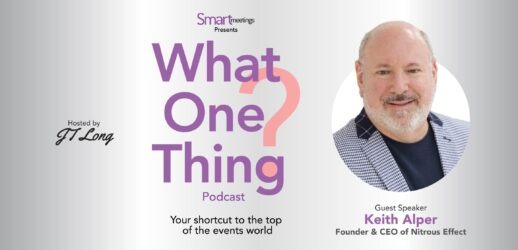New tech tools can optimize the process
Besides being financially lucrative, registration has become a make-or-break-it component of the meetings industry. In fact, registration yields 48 percent of total event revenue, according to the annual PCMA Convene Meetings Market Survey, released in February.
So how can registration be more appealing? What valuable information can it provide? These are the questions event management software companies are asking—and answering.
Breaking down the major drivers can help event professionals design an optimized registration process. Here are some major trends propelling new registration technology.
Mobile Integration
More often than not, event planners experience deja vu when setting up a registration form. In preserving consistency and saving time, many registration forms can offer prefilled fields. All the planner needs to do is set up the framework and tweak it each time.
“At the end of the day, people who are running events have enough to worry about,” says Kevin Yanushefski, product marketing manager at Cvent. “Registration shouldn’t be one of those things. The internet has enabled people to very easily submit their information online.”
Yet, completing registration forms more easily is only the beginning. When thinking about seamless integration, it’s time to start focusing on mobile integration. In a world where smartphones have basically become external limbs, they should be used to their full potential. Research and advisory company Gartner predicts that by 2018, more than 50 percent of users will be accessing the internet from a tablet or smartphone rather than a desktop computer or laptop.
Measuring turnout numbers at the door is a good example of how to apply mobile integration. For example, at a conference, everyone could be checked in at the door with RFID (radio-frequency identity) badges. This would reveal who actually showed up. Attendees would receive an alert to take the survey that has been pushed to their phones. According to Yanushefski, this yields a fantastic level of event feedback.
Once mobile compatibility has been achieved, it’s crucial to combine all programs on one clean application.
“One of the most crucial components is having all tasks and data in one place so that there’s no switching back and forth between apps,” says Suzanna Thompson, U.S. business development representative for Eventbrite centralization. “This is a major time-saver. This adds efficiency to daily tasks and decisions.”
Rather than importing and exporting between tools, integrating registration and the processes that follow onto one application will create a stronger, one-stop-shop base. Components such as venue sourcing and social media management can be utilized.
Incentivizing Registration
Kicking registration numbers up a notch is always an event goal. This is a challenge, though.
“Some ways to incentivize attendees are with raffles, easily sharable links on social media, metrics and analytics around the website,” Yanushefski says. “But we really want to get attendees to the yes or no stage. If they can’t come, we still have the opportunity to present them with a regret survey or see if they want to refer others who might be interested.”
Incentives are quite effective. According to the findings of the Focus Report on Organizer Pre-event Communications and Registration Offerings conducted by the Center for Exhibition Industry Research (CEIR), 75 percent of attendees would be more likely to use pre-event planning tools if they earned perks at the event, such as preferential seating.
Intelligent Customization
The more you know about your audience, the easier it will be to provide personalized experience. Many overlook the potential to collect such information during registration. At that point, you have your audience on the hook and might as well reel them in—and hopefully engage further.
“Capturing your company’s audience will definitely be a lot about customization and optimizing the experience,” Yanushefski says. “For instance, you might ask what their favorite type of music is during registration and then play [the most popular] music while they are waiting in line for the event.
“Hyper-personalization is the future. It is pretty much a given that I know the sorts of sessions they go to, what they like. So, the next step for the event experience is to use an algorithm that can pair people up by interests, locations and mutual usefulness. It’s something that a smart event planner could do if they had the time, and no sleep, and no life.”
Part of a Larger Whole
“Overall, the event planning life cycle is plan, promote, manage your registration, engage audience and evaluate,” Yanushefski says. “This is the basic cycle of event technology. Registration is perhaps the most important component here, as it really stratifies the promote and manage stages.”
As the process that kicks off the trajectory of your entire event, registration should be intelligently designed and executed. First and foremost, attendees need to commit to attending your event.




